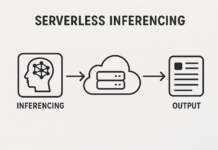Math, to some people, is the greatest downfall of the school system. While these sentiments are echoed through many students, math will always be taught. Since this is the case, students who develop an interest in math will generally be more successful. Just like anything else, if you like it, you’ll want to practice, and you’ll want to do better.
The problem with school is that it is so competitive with students fighting for marks that they never see the beauty that math can bring: Einstein’s theory of Relativity, the explanation of the Universe, computer systems, architecture, chemistry…the list goes on and on. Instead, most students simply vent by saying, “When will we ever use this?”
This article will attempt to change your child’s mind about math, and try to get him or her interested in a subject that has infinite potential. Hopefully, with this inspiration, your child will gain a love for math and followed success.
The three keys to building interest in math are:
1) Broaden your child’s knowledge
2) Align math with your child’s personal interests
3) Use math as a step to attain their goals
Broaden your child’s knowledge
Math can often be a very dry subject in schools. Teachers have a lot of ground to cover, and a very limited time to do it in. Having to cover 26+ students does not allow for much room in the ‘creativity’ business. Relying on textbooks only strengthens the dullness of the subject. Rest assured though, there are such things as enjoyable math problems.
You’ve got to first broaden your child’s knowledge. Get out there and explore. The more you see, the more questions you have, and more likely than not, these questions can be answered by math.
Here’s one example. Has your child ever asked you why the Universe runs in a certain way? How space and time work? Albert Einstein wrote a book about his idea on Relativity (in Layman’s terms, don’t worry). Steven Hawking and Richard Feynman, two of the greatest scientists since Einstein, have also written about the Universe, (also in Layman’s terms). So your child doesn’t need to solve Relativity equations or master complex mathematics in order to understand the basic idea.
These ideas will further stimulate his interest to explore math further, because ultimately to fill the void behind the basic understand, he needs the math knowledge.
Suggested reading materials
What you are trying to do is expand your child’ knowledge beyond school life. Sure, school is interesting and all, but what you want them to do is to have some interests and hobbies outside of the school system. The more he or she knows, the more they can apply; and not just for math.
With the above example, I introduced some of these concepts to a grade 10 student. She ended up really getting into it and telling her math teacher, “Three angles in a triangle might not add up to 180 degrees, if you are on a curved space – a sphere, rather than a flat surface”. Of course, the teacher was very impressed, and thus the student has more motivation to learn. Consider it positive reinforcement.
Here’s another example. Perhaps your child is interested in video games? What about how video games work? You can introduce them to programming languages like C or Java. Try to build some simple programs, or even their own webpage with HTML coding. The process is self-gratifying, because they can visualize their creation on the screen. Computer programming involves logic, which is closely tied to math. This hopefully might make them more interested in the work they do in math class, plus you might get a neat webpage out of it.
It’s all about interests. Figure out what your child likes, and have them read up on it. This is probably the easiest and most enjoyable task you’ll have as a parent, because they will probably be supportive in this endeavor. Besides, all you’re doing is finding out things that are fun and interesting to them. Not only will this lead into interests academically, but you might help them find something worthwhile for the rest of their lives.
Align math with your child’s personal interest
Let’s revisit that video game example. If I were to ask most students, “Do you like video games?” the resounding response would be yes. But has your child ever considered how to make that 3D graphic or character to move across the screen? Have they ever wondered what is required? There are literally tens of millions of polygons that are snapped together to create the 3D figure, like wallpaper, and the computer has to calculate how each triangle coordinates to move to the next spot. This means performing millions of calculations at the same time. And guess what else this involves? Coordinate geometry / transformation / matrices!
Try to relate math to what your child does in everyday life. Maybe they are an avid Facebook user. Introduce them to the wonder of how the computer systems in Facebook, can service millions of users at the same time, each browsing a different page. And don’t forget about the computer systems that are required to do this if the users are completely random and unpredictable.
How about cell phones? Almost every teenager nowadays uses a cell phone. Has your child ever wondered how you can get your voice across to people?
There are millions of things that your child can find interests in. All you need to do is instill that hunger to learn more about that subject, and eventually, it will find its way down to math. At its basic core, many things in the world pretty much distill themselves into mathematics and logic. So explain to your child that no matter what they do, where they go, and what interests they find, math will be there.
Use math as a step to attain your child’s goal
Speaking from experience, students who have a clear goal usually perform better. Does your child have a strong goal for their future? Do they want to become an entrepreneur, financier, a doctor, or a teacher? Hopefully by the time they enter grade 12, they will have a better idea of what field they want to enter. Be very sure that whatever field your child goes into, math will definitely be a part of it. Even if it is going to be minimal in the line of work they pursue one day, it will at least be required for their post secondary requirements.
For instance, I did have a student who wanted to get into the Commerce program. He asked me if calculus would ever be needed in his career. Truthfully, no. Once you are in the field and working, chances are you will never encounter calculus ever again. However, how do you graduate from the Commerce program? By completing first year calculus in university. So whether your child likes it or not, math will be there.
In fact, most Canadian university programs, except for arts or social science, require students to have Grade 12 Advanced Functions as one of their top 6 grades. And very often, students don’t realize this until they are in grade 12. They also don’t realize that doing well in grade 12 math begins in grade 9.
Getting back to the subject at hand, once your help your child find an interest in their lives, it will help them get into the mathematical aspects in the world and in school. They can align that interest with math and hopefully, view it as a more pleasant way to accomplish their goals. Get them to see the vision and go for it! You can rest easy knowing that when your child follows their passions, they already elevate themselves over the competition. Now just have them stay focused and persevere!
The post is originally written by Queen Elizabeth Academy – Math Tutor Mississauga.






















































